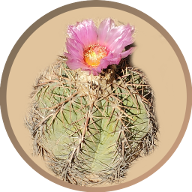In 2019, I moved from an apartment into a house in Tempe. Now I had a yard of my own to take care of. There was no grass and no pool. The front-yard was mostly gravel with a few palm trees, an olive tree, and an oleander hedge that was overgrown with weeds. In the back-yard there was emptiness, except for a couple of small plants from Lowes that the previous owners had quickly thrown in. There used to be grass in the back yard but it had long since died and was replaced with an excessive amount of gravel. Later, I discovered a total of 8 dead tree stumps buried in the sea of gravel. Many of the old stumps had rotted out and were easy to remove. Two were citrus tree stumps that had re-sprouted and created odd-looking bushes. One was a fresh tree stump from a large tree, and it was the hardest to remove. Tropical plants cannot survive on their own for very long in the desert. If their care is neglected they die. This was the situation I was moving-in to.
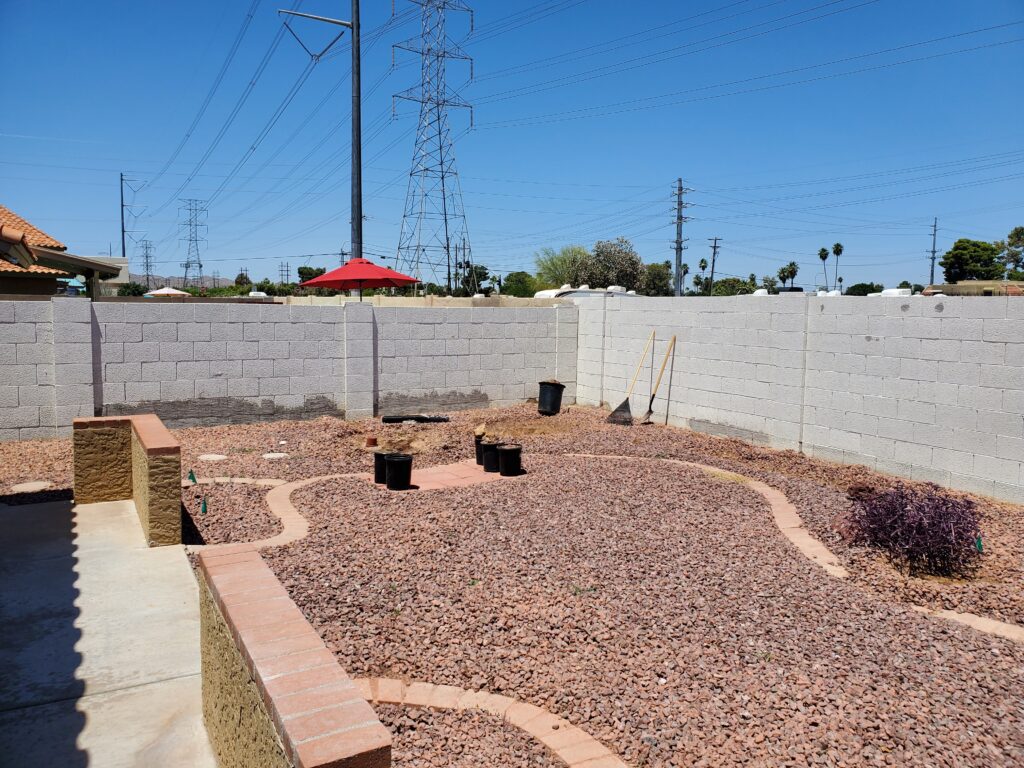
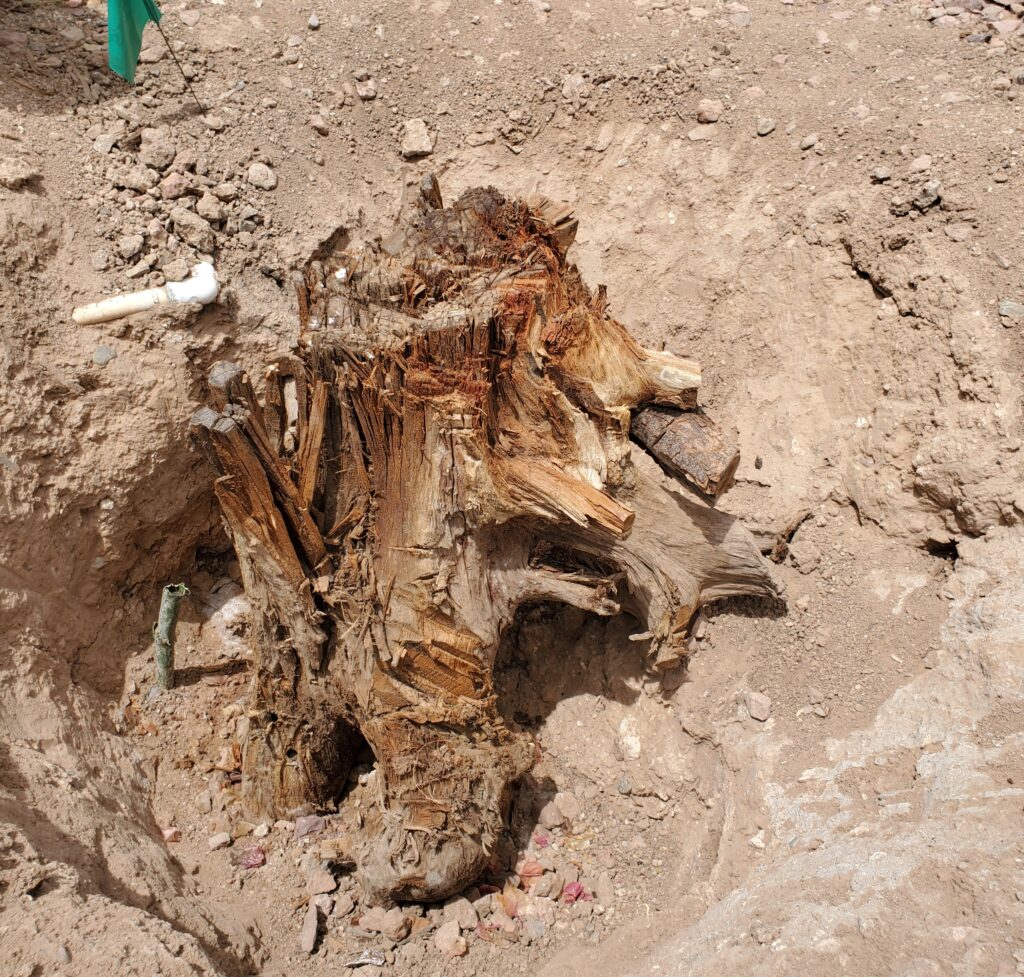
Lawns and Tropical Plants
I started doing more research on gardening in deserts of the Southwest. It seems like the previous trend in the region was to plant a grass lawn with palm trees and tropical plants. There are many problems with this approach:
- Tropical plants require excessive amounts of water to survive. Landscaping and pools make up 70% of residential water use. Obviously, conserving water in the desert is important!
- Tropical plants don’t get along with desert soil. Desert soil is alkaline, which most tropical plants don’t like. Essential minerals like iron cannot be absorbed because of the alkalinity. It is also lacking in organic matter to supply nitrogen for growth.
- Many tropical plants can’t take the Arizona sun. Most of the newly planted tropicals in my yard were roasted to a crisp at the start of the first summer.
- Grass lawns are a bad idea in general. They require large amounts of water and fertilizer. They require constant mowing. They are a monoculture, which is the oposite of biodiversity. They are a favorite spot for other people’s dogs to do their business.
- Palms can grow to dizzy heights where they are out of proportion to the rest of the garden. They need to be trimmed on a regular basis. Climbing the palm trees to trim them is dangerous and the spikes damage the tree permanently. One tree trimmer fell off a palm tree and died in my neighborhood. It’s not worth it.
Natural Desert Landscaping
To solve these problems many gardeners have turned to natural desert landscapes. Using native Arizonan plants in their natural habitat has many benefits:
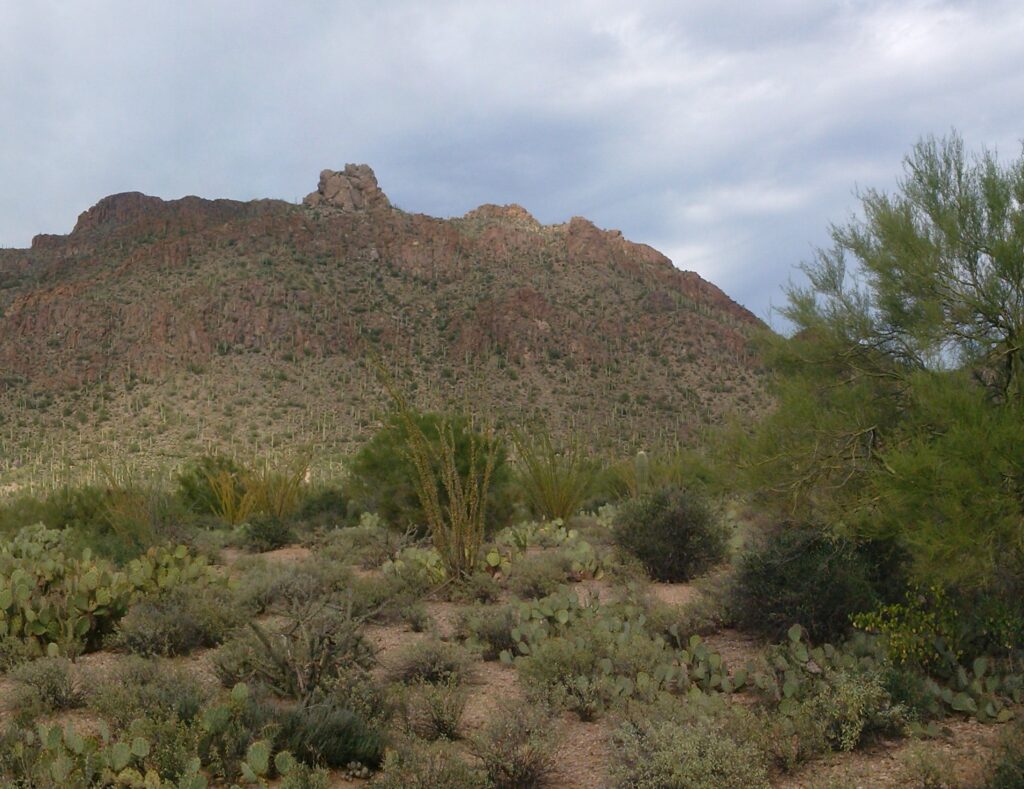
- They thrive in the intense sunshine.
- They have special adaptations that help them to capture more water and hold on to it, making them drought resistant.
- The animals/insects of Arizona make use of the native plants.They use them for food and shelter. These are the plants that they have adapted to live with for millions of years.
- They create a sense of place. Why would someone want to come to Arizona to see African plants? It would be equally undesireable to go to Africa to see Arizonan plants.
- They are unique and beautiful. The plants carried by nurseries are pitifully common and overused, but nature contains an abundance of biodiversity. Nurseries usually select a few plants that are showy and fast growing in order to maximize profits. The native plants of Arizona are usually slow growing and more difficult to propagate. Their careful slow growth is what gives them their resilience.
At the start, I didn’t know a lot about gardening with native plants. I made some beginner mistakes that I still regret. That is part of the learning process. I read a lot of good books on desert gardening, Arizonan plants, and water harvesting. One of my favorites was Yard Full of Sun by Scott Calhoun. It doesn’t contain much technical information but it fills you with the passion and enthusiasm for desert gardening. I developed respect and admiration for the desert plants’ remarkable ability to survive in an extremely harsh climate. The more I began to appreciate the plants, the more enjoyable the experience of re-doing my landscape became.
Breaking Ground
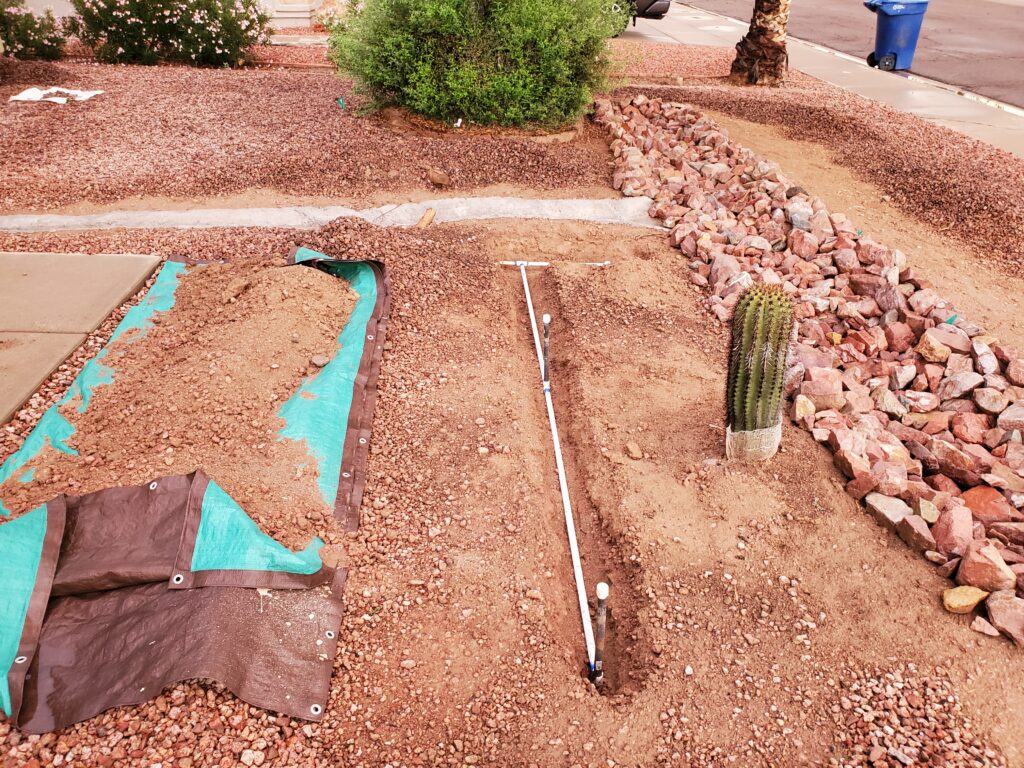
It was a lot of work to redo the back and front yards completely. Neighbors would often ask me what I was doing in my yard and why I hadn’t hired someone to do it for me. I love desert gardening. Thats the way I prefer to spend my free time. My only regret is wishing I had a larger yard so I could do even more with it. Why would I pay someone to do it for me? It would be like paying someone to play video games for me (which, strangely, some people do). Maybe it’s because I sit in a cubicle all week long staring at a computer screen. Getting down on my knees in the dirt, out in the sun and fresh air, is refreshing.
Another thing my neighbors always ask me is if I am finished yet. A garden is never finished. It is a living growing ecosystem. It is not like a hardscape patio where you just have it installed and that is it. Not that people don’t try to do this. The nurseries are carrying larger and larger plants, so that you don’t need to grow a garden, you can just install an instant garden. The first tree I planted in my yard was an Ironwood tree (Olneya tesota). I called up the nursery and asked if they had any. They told me yes, they are $5000 each. They asked how wide the entrance to my backyard was. It turns out, you can’t get a crane into a backyard with only a 3 foot wide gate. When I asked if they had any smaller ironwood trees, they begrudgingly answered yes. My small ironwood tree has grown vigorously for several years now. By starting with smaller nursery stock, I was able to plant most of the plants myself. The smaller plants tend to establish faster when transplanted and grow a healthier root system.
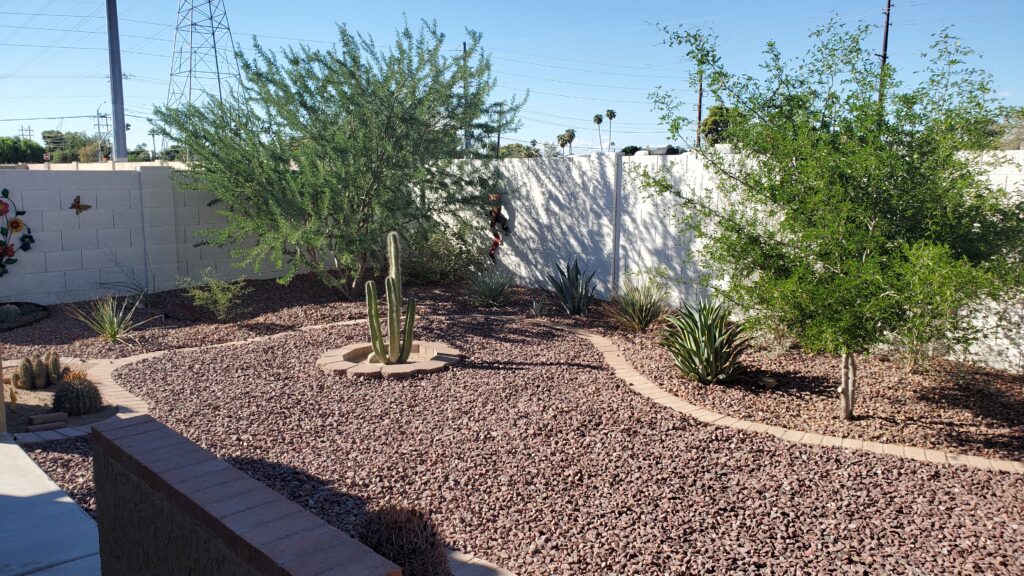
There is still lots of work for me to do in the garden, which is great because I love doing it.
